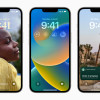How a Sprint Phone Is Born
Branding is a part of the decision process that Sprint pays special attention to. Dan Hesse, Sprint CEO, told Phone Scoop that every company wants to associate itself with strong brands. This played a role, for example, in Sprint's decision to offer Apple's iPhone. The iPhone and Apple both have strong reputations in the market, and Hesse knew that Sprint would benefit by associating Apple and the iPhone with Sprint.
The global nature of recent products, however, has had a huge impact on this part of Sprint's decision-making process. For example, with the HTC One Series. Sprint was impressed by the One Series and wanted to offer its own. However, it spent hundreds of millions of dollars investing in and building the EVO brand, starting with the EVO 4G in June 2010 and a half-dozen others in the following years.

Sprint wanted a new, iconic EVO device, but it also wanted HTC's One X. In order to serve its purposes and reap the benefits of its EVO investment, Sprint chose to rebrand the HTC One X as the EVO 4G LTE. It also asked HTC to make design modifications to differentiate it more from the devices offered by its competitors.
"Branding is important to people," explained Sprint VP David Owens. "Even if something is the same, the affiliation with Sprint and HTC with the EVO brand is important for us and our customers. Every time we look at a global product like that, we have to ask these same types of questions."
When faced with the Samsung Galaxy S III, however, Sprint knew it had to take a different approach. Samsung pushed for the global status of the device and didn't want to differentiate the hardware for individual carriers. Sprint admits that with devices such as the Galaxy S III and iPhone 4/4S, it has to play ball with its hardware partners.


 iPhone 15 Series Goes All-In on USB-C and Dynamic Island
iPhone 15 Series Goes All-In on USB-C and Dynamic Island
 Samsung S24 Series Adds More AI, Updates the Hardware
Samsung S24 Series Adds More AI, Updates the Hardware
 iOS 16 Revamps the Lock Screen
iOS 16 Revamps the Lock Screen
 Motorola Shows Off New Concepts in AI, Foldables
Motorola Shows Off New Concepts in AI, Foldables








